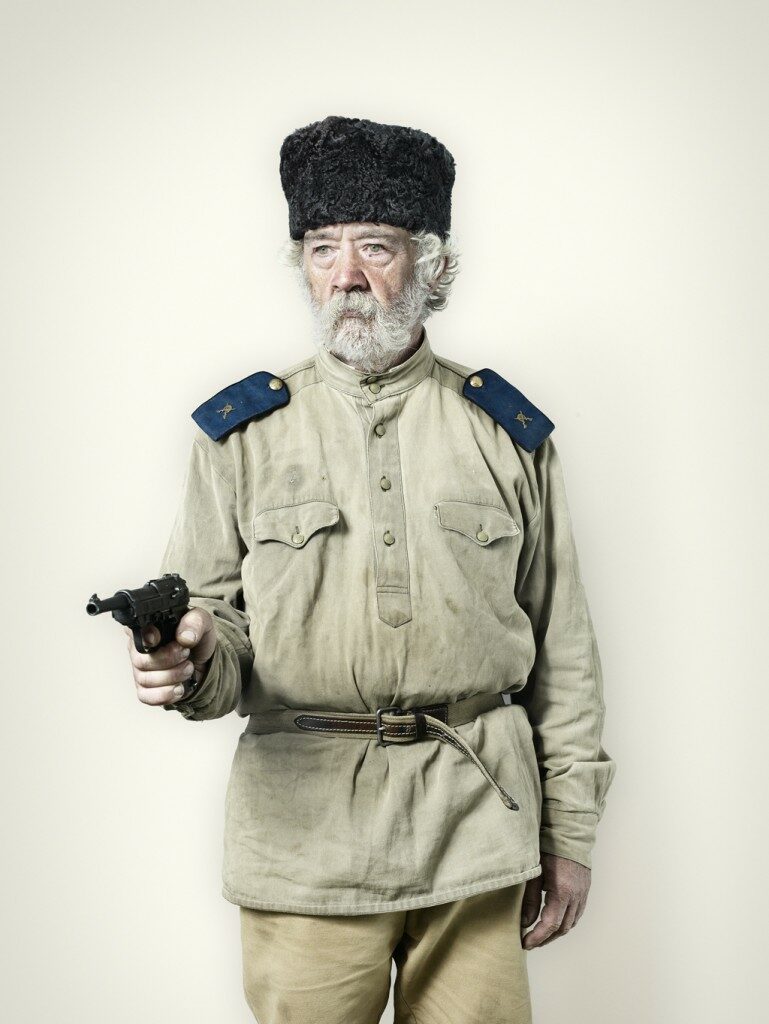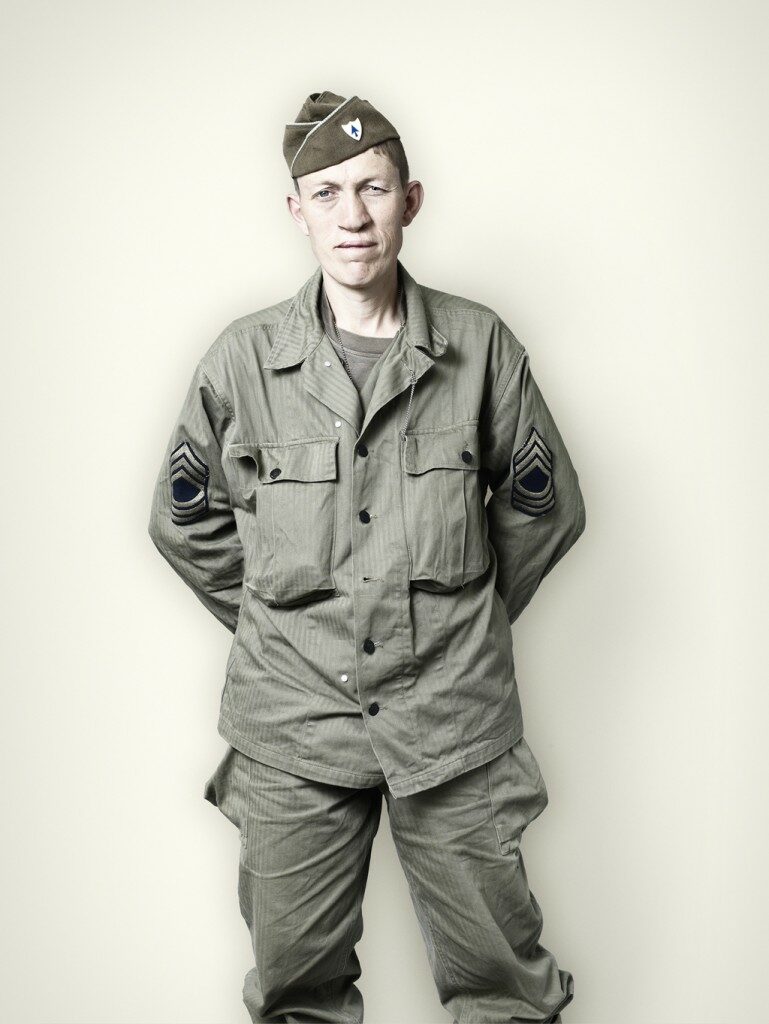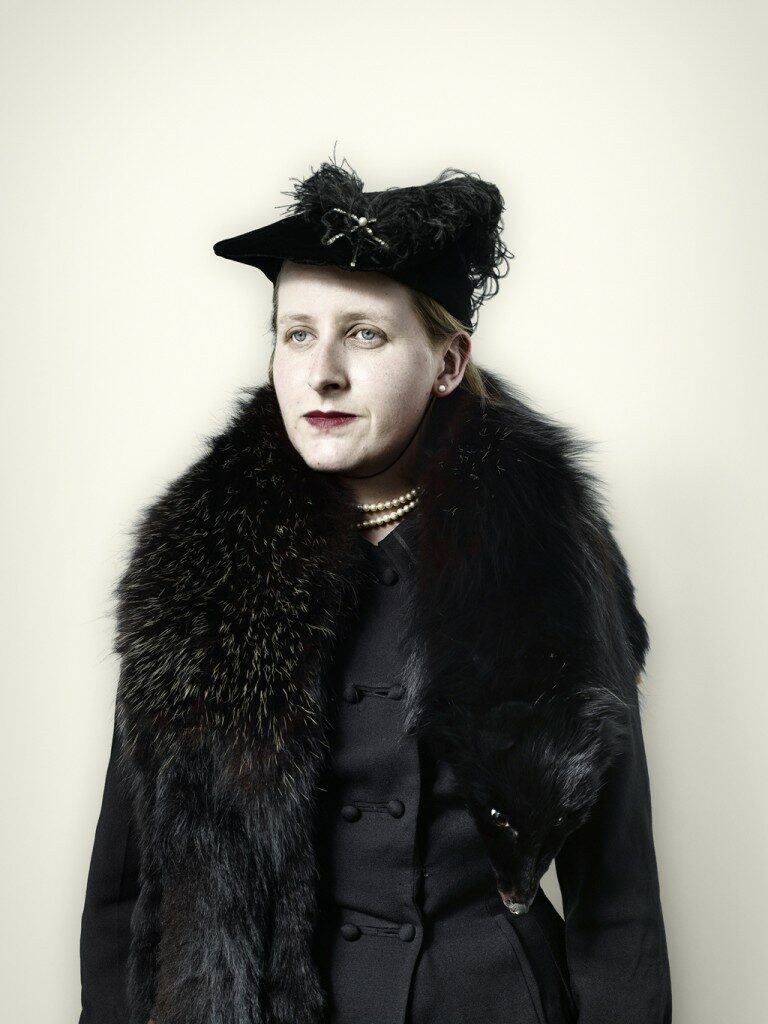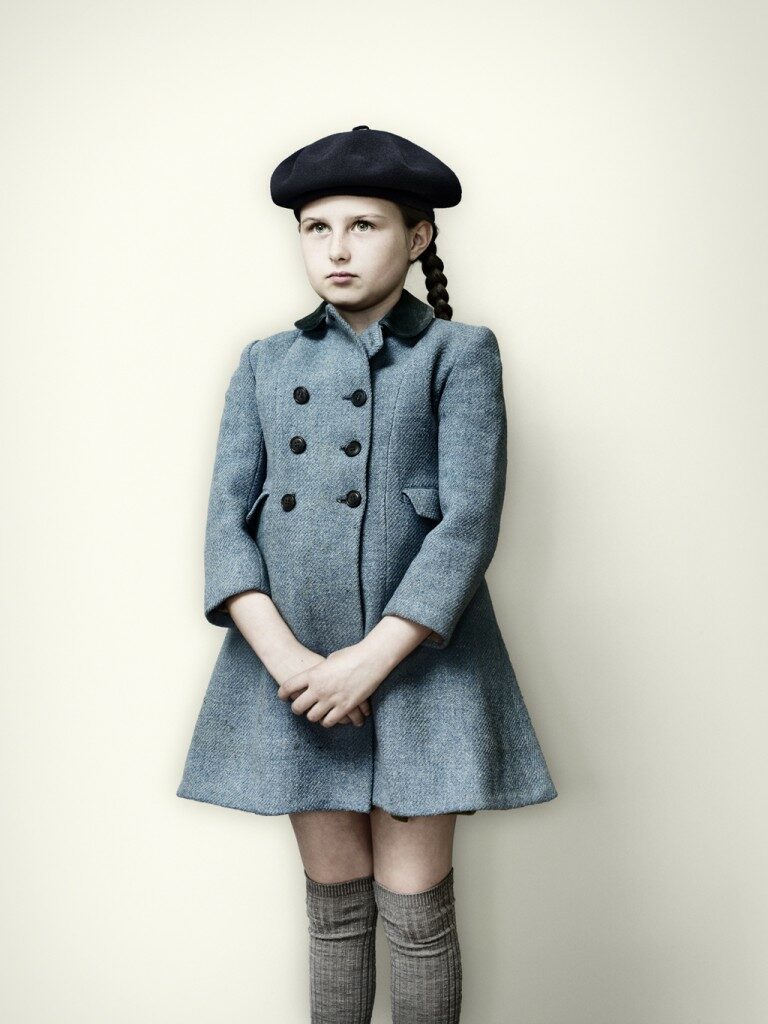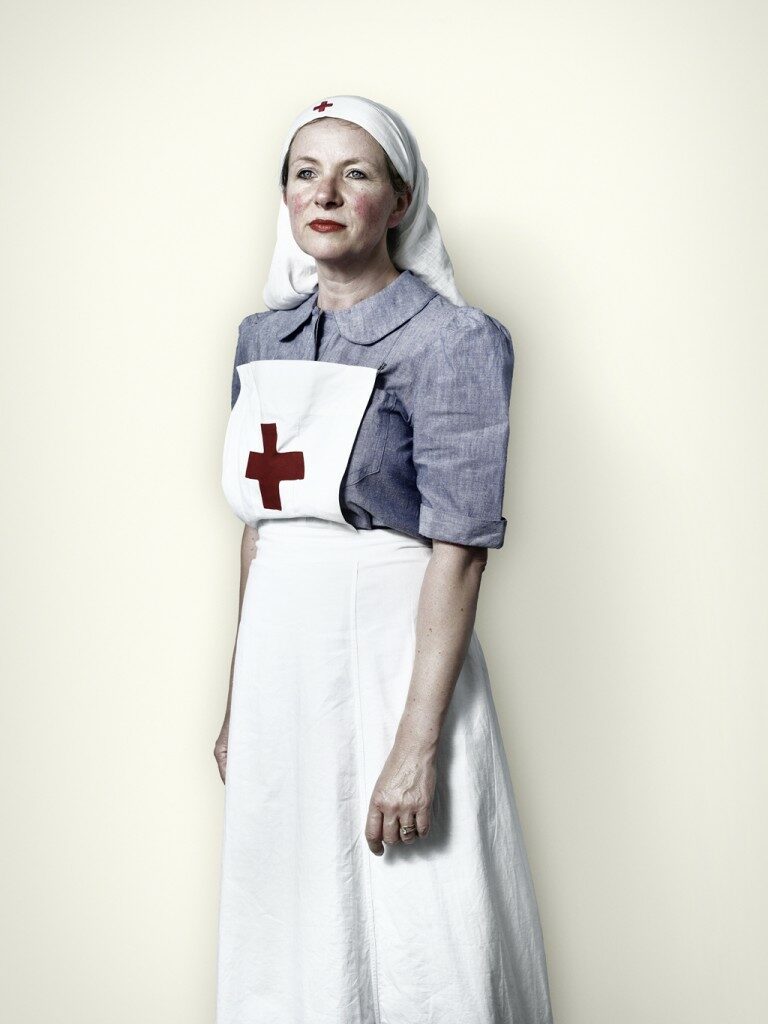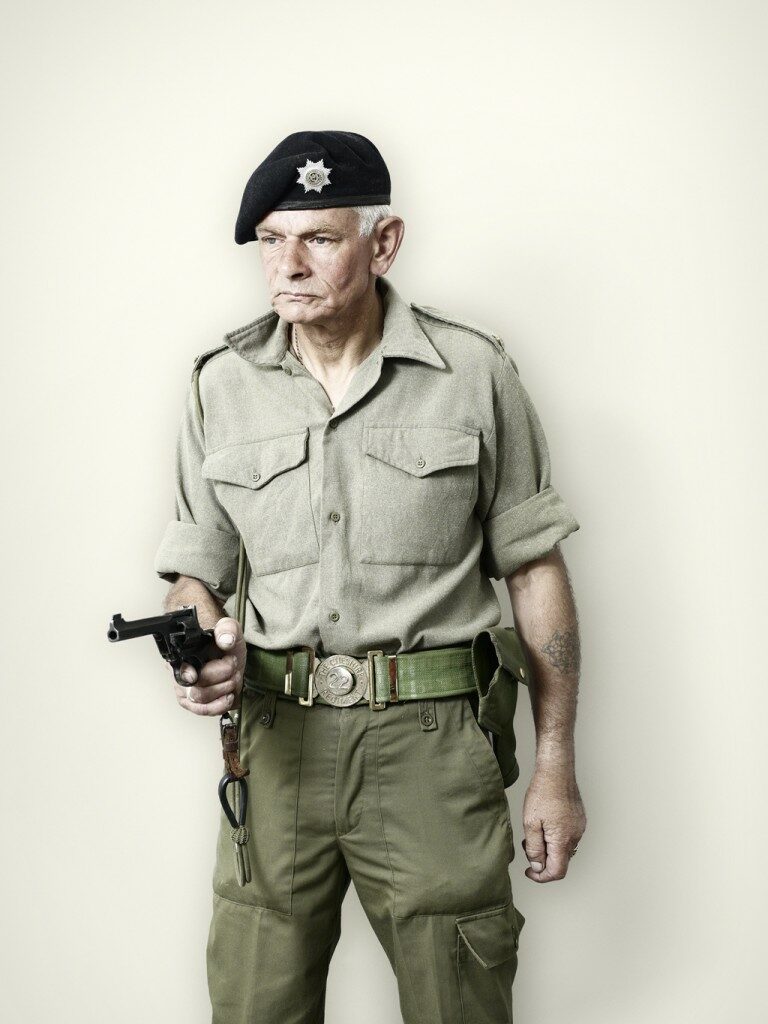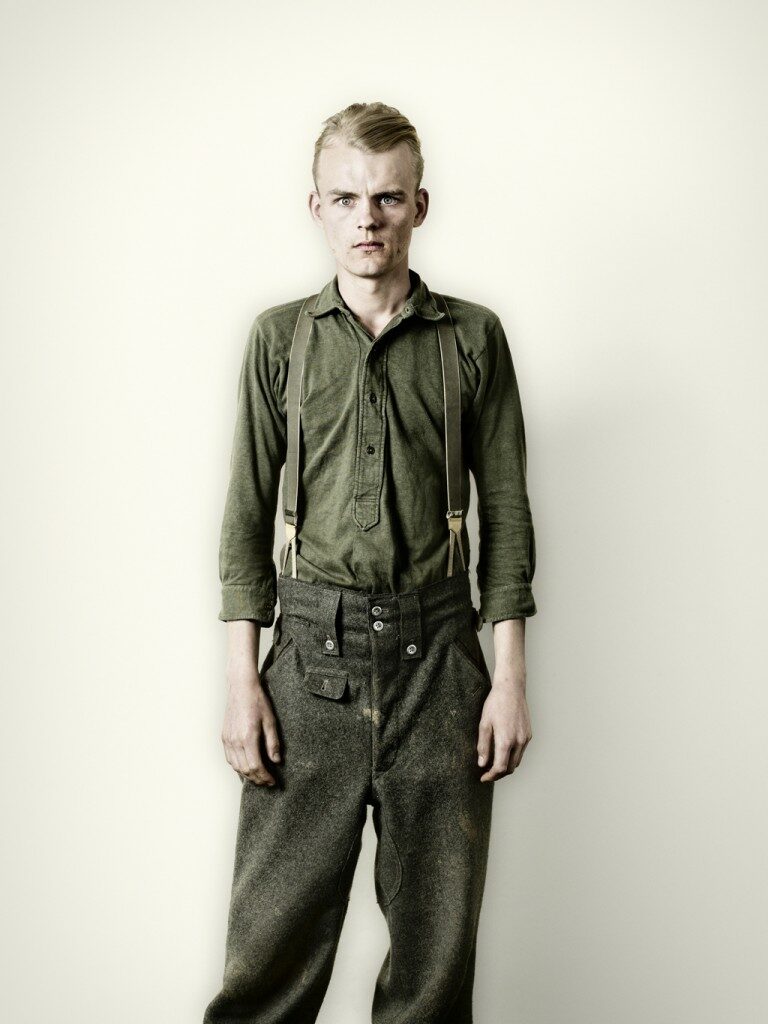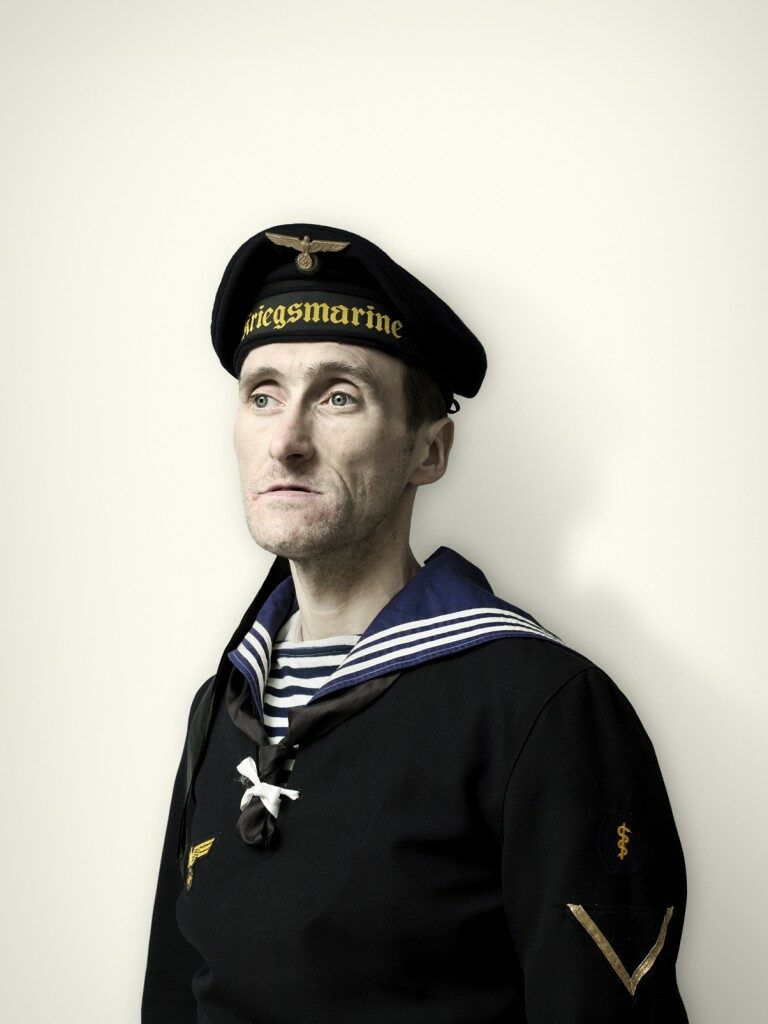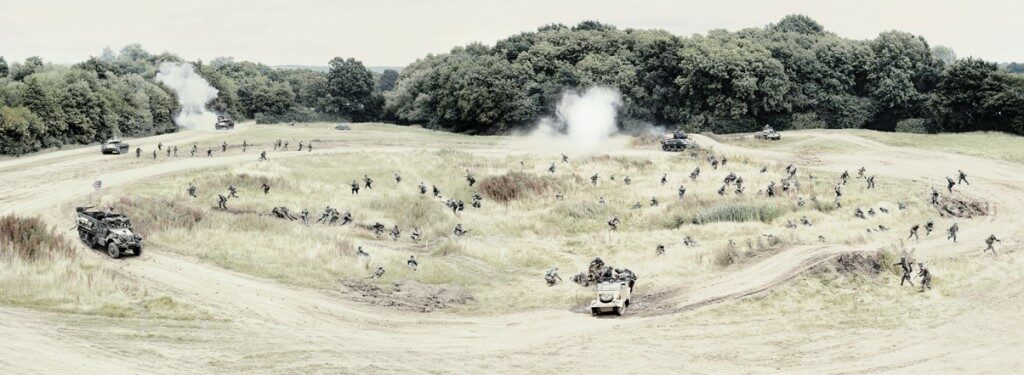Kate Peters, UK
Lewis into Maid Franchesca
This series is taken from a larger body of work looking at the world of professional Dominatrix. It is an exploration of alternative realities and the notion of transforming yourself from one reality to another. Kate-Peters_CV_2011




Carlo Bevilaqua, Italy
Into The Silence
Secular or religious, Catholic or Orthodox, followers of singular syncretism of Eastern religions and apocryphal Christian revelation or even shamans healers: these are the contemporary hermits. Maybe a new utopia? A distant reality? Far from it. Yet it seems paradoxical in a society that does not lose opportunities to celebrate his being mass, the din of the modern world has unaccustomed silence They are not so many, but their presence and their witness have a powerful and fascinating effect. Hermits, far from disappeared, are a growing and fascinating phenomenon. They live sometimes isolated in small apartments in the heart of our cities, most often they stay by the side of woods and villages. They build their own retreat or put away old rectory and chapels that previously fell to pieces. The phenomenon has been observed in the late eighties and recent years have seen a steady increase in number. The hermit does not withdraw because he failed to achieve a position in the world or for personal ambitions and we can not speak of misanthropy. They are educated, almost all graduates, many monks, priests or missionaries. But also many lay people: architects, doctors, director, writer, several teachers. They choose mountain villages, suburbs or country houses. Everything depends on the presence of abandoned buildings to be used as hermitage. Some have e-mail and who decided not to hold the computer, those who allow themselves to photograph and who does not grant an interview. Extraordinary stories and portraits of surprising humanity which strike for the radical and the beauty of life that flows from it. In Italy and France, ranging between 200 and 300, while in Germany, according to the official statistics are not over 80. Worldwide, the clear majority, approximately 60 percent, is made up of women. In the United States they are about 500, 10 percent of which is married. The western hermitage – after the extraordinary flowering of early Christianity and the High Middle Ages – has almost disappeared from the nineteenth and first half of the twentieth century. Just since the sixties, however, someone began to reconsider it as a lifestyle, not just as a religious choice . The early pioneers of the solitary life timidly make their appearance in France, Canada and Italy. Even the Vatican is aware of these enzymes and in 1983 the new Code of Canon Law establishes the figure of the diocesan hermit, under the authority of the bishop. But not everyone accepts this constraint and therefore not all are legally “recognized” by the Church. Not enough, however, to make them less adherent to a choice of faith or life. A little hidden world, but alive, very strong, far from the myths and false needs of our world, sometimes unnecessarily dizzy .
Carlo Bevilacqua Carlo Bevilacqua, photographer and documentary filmmaker, born in Palermo, Sicily in 1961. Mention of Honour in the International Photographic Awards 2008 and 2009 ,in America Photo 2008, in Tau Visual Professional Prize for Creativity 2008, winner of the HF Prize in SI Fest Savignano Immagini 2008, his career has spanned more than twenty years, alternating photography and direction of documentaries and video clips. He started taking pictures in Sicily in the 80’s, originally focusing on societal and anthropological photographic studies. He is based in Milan (Italy ) working with magazines, communications and advertising agencies, creating photography spreads, campaigns and videos. He has also directed various documentaries and video clips, including, Little Red Robin Hood a biographic documentary about Robert Wyatt, Soft Machine’s singer and drummer, with Elvis Costello, Brian Eno, Paul Weller and Nick Mason (Pink Floyd drummer) His works has been exhibited or screened in various films and photo festival as Boutographies in Montpellier, France, Biennal of Photography Brescia Italy, PhotoBiennale in Thessaloniki Greece, International Fotografia Festival Rome, Indian Vision London, Fotografia Europea Reggio Emilia Italy, Center for Fine Art Photography Colorado USA . www.carlobevilacqua.com [email protected] c/o Xtv Via G.Watt 14 20143 Milan italy +393356057298 +39 3356057298 Exhibitions Quotidiani (Palermo 1983) Giardini Immaginari (Palermo 1984) A Different Robin Hood – co-author Francesco Di Loreto Lingotto – Salon of Music (Turin Italy 2000) Indian Stills Open Care Palazzo del Ghiaccio (Milano 2007 ) Galleria delle Battaglie – Biennale di Fotografia (Brescia 2008 ) Les Boutographies Montpellier 2009 (French) FotoGrafia Festival Roma ( Italy ) 2009 Turin Photo Festival (Italy )2009 Nerhu Center London ( UK ) 2009 Galleria Amarillo – Fotografia Europea 2010 Reggio Emilia (Italy) Festival Fotografico Italiano November 2010 Busto Arsizio (Va) Italy Gisbert Lippelt Low Cost Life FotoGrafia Festival Roma 2009 ( Slideshow) Fotografia Europea 2010 Gualtieri – Reggio Emilia (Italy) Festival Fotografico Mediterraneo December 2010 Lecce (Italy) International Meeting Of Photography – October 2010 Plovdiv ( Poland ) (Slideshow) The Last Wall Plaza 2009 – Milan – International Contemporary Art Exhibition for the XX Aniversary of the Fall of the Berlin Wall PhotoBiennale 2010 – Thessaloniki Greece Reportage Photo Festival November 2010. Sidney Australia (Slideshow) Group Shows and Auctions Nuovi Soggetti a Rischio Magna Grecia Festival Parco Monumentale San Nicolò (Syracuse Italy 1985) Obiettivo Soggettivo – Fotocontaminazioni sull’arte africana (Milan Italy 1994) A Different Robin Hood (Turin Italy 2000 ) Progetto Sindbad SPAZIO EMBLEMA Aprile 2003 Milan (Italy) Foto8 Summer Show Host Gallery ( London – UK 2008 ) International Exhibition of Fine Art Photography ( Fort Collins Colorado USA 2008 ) Prima Visione 2008 Milano e il Mondo Un Anno di Fotografie Galleria Bel Vedere (Milan February 2009) La Magia della Polaroid Italian Fine Art Photography Center – (Bibbiena – Arezzo Italy 2009) Urban Zen Donna Karan Foundation Auction Stephan Weiss Studio ( New York- USA 2008 ) Sotheby’s Contemporary Photography Auction ( Nov 2008, Novr 2009 and Jun and Nov 2010 – Milan Italy) Forma Foundation for Photography (Milan Italy March 2011 ) CarloBevilacquaBio


Mirjana Vrbarski, Serbia
Verses of Emptiness
Verses of Emptiness revolves around portraiture as a way of exploring timelessness. It consists of simple images of women whose expression and environment have been reduced to a bare minimum. Rather than engaging with the viewer, these women are sculpted inwards, hollowed out towards a more meditative, contemplative place. As their context is minimized and the clamour of contemporaneity silenced, the women become a testimony to a certain continuum in our expression; to that which remains resistant to change and the passing of time. Verses of Emptiness is an ongoing project. All images in Verses of Emptiness are a part of a limited edition and are to be sold accordingly. All images may be exhibited individually or together, according to the discretion of Galerie Huit Open Salon organizers.
Mirjana Vrbaski was born in Montreal, Canada in 1978. Having spent the first 16 years of her life in Serbia, she moved back to Canada in 1994. She studied English Literature at the University of Guelph in Ontario and Communications at McGill University in Montreal. At the age of 27, after having worked in communications, she moved to the Netherlands to complete a Bachelor of Photographic Studies at The Royal Academy of Art in The Hague. She now lives and works in Amsterdam. Vrbaski_Mirjana_CV




Teri Havens, US
The Last Free Place
The Last Free Place For three years I lived part-time in Slab City, a squatters’ community located on a desolate swath of southern California’s Sonoran desert wedged between the Salton Sea and an active bombing range. Since shortly after World War II, The Slabs have been a refuge for drifters, dropouts, artists, outlaws and other cultural dissidents who settle alongside the addicted and the elderly on the crumbling concrete foundations of an abandoned military base. Wanting to escape the confines of another Colorado winter, I towed a small trailer down from the mountains, across the verdant fields of the Imperial Valley, then finally over the railroad tracks that divide the town of Niland from the autonomous frontier of The Slabs. I set up camp on the edge of a shallow wash and settled into the pace of Slab life. There was a gentle rhythm to the days; the openness of the desert allowed for expansion – a dreamy, almost luxurious escape from expectations and ambition. Slab City is a collection of fiercely independent, utterly original individuals. Cast out of, or just drifting away from, the “American dream,” they come here seeking freedom from rules, rent, and the assaults of a society often unsympathetic to the underclass. Some are victims of poverty, of bad choices and bad luck. Others have renounced the trappings of the “material world,” refusing to trade their time for money. Many simply yearn for the sense of freedom that comes from vast open spaces, fulfilling a desire for self-sufficiency by staking out a small slice of the ever diminishing unclaimed territory that has driven Americans west for centuries. And though desert life can be extremely harsh, and in truth there is little freedom in poverty, here they find love and strength within a community that accepts and nurtures the individuality of its members. Inspired by the early images of the disenfranchised as depicted by the WPA photographers of the 1930’s, I began a series of portraits documenting the people of Slab City. Using available light, film and traditional printmaking methods, I attempt to capture the constant universal tension between hope and resignation, between community and isolation.
Teri Havens was born in 1967 and raised in Lubbock, Texas. She has been photographing American culture as a way of connecting with the world around her for the past twenty years. After studying photography at the University of Texas, and serving as an intern at Magnum photo agency in New York, she honed her printing techniques in darkrooms improvised in kitchens and motel rooms across the country. Recent projects include: Woman’s Professional Rodeo, The Mississippi Delta, and Portraits of the rural West. Teri currently lives in Marble, Colorado. “Teri Havens constructs her narrative through mystery and enigma…she manages to create a distinction between seeing and looking. The scraggy misfits she photographs are interesting, beautifully human outcasts who retain their dignity under her lens.” London art critic Kerim Aytec on The Last Free Place.




Patricia Casey, Australia
Fugue (Dear Darkness)
My birth family exhibits the symptoms of a form of emotional echolalia. Echolalia is an involuntary reflex that involves the repetition or echoing of an utterance from another person. It is generally associated with autistic savants (historically called idiot savants) or with people diagnosed with neurological disorders like Tourettes syndrome, or with certain brain injuries or impairments. Sometimes, the repetition is only a phrase, or a few words, but autistic savants can often repeat whole tracts of conversation or dialogues from a film or play. My recent research interests have comprised of an exploration of echolalia and the family narrative. While echolalia is a term I have extracted from the medical discourse, my research has involved looking at the way in which this term can also be applied to the impulse most people have to repeat family stories. I am therefore concerned with echolalia, not in terms of its pathology, but as a metaphor for the pattern and repetition that exists in the telling of the family narrative. In this work I have sought to capture the transient echolalic moment. I have attempted to simulate a record of the reflexive experience to repeat a story. I was intrigued with the idea of what the experience of an echo might look like if you were able to capture it and freeze it just at the crest point of remembrance. What does it look like to be immersed in this way? To this end I have physically immersed and frozen my photographs as an explorative tool and starting point for this segment of my investigation. The photographs are portraits that have initially been altered through digital layering with images of landscapes and organic material, producing second generation images that have been immersed in water and physically frozen inside a block of ice. Simulating the echo, I re-photographed the portraits inside their block of ice using movement and blur. As a result the images appear marked, stained and blurred. The subjects shift and change, becoming a chorus, yet each is caught within their own experience of the echolalic moment. Full faced with watchful eyes the subjects engage with the observer through a veil of remembering. My use of layering and the effects created by the ice are signs for the viewer that may indicate that this is an intimate moment, yet at the same time one that we all experience. Their gaze may at first appear outward, but is more inward as the subjects are swept internally to another time and space in the past. Immersed in the act of remembering, there is a conflict between presence and absence in these images. What narrative is being replayed? These moments are very private so we don’t know. We can only imagine and using our own lived body experience and the clues given produce an individual response. The title, Fugue (Dear Darkness) provides an entry point for discerning the meaning of this work. A fugue can be a immersive, dreamlike state of altered reality. It can also be defined as a musical composition in which one or two themes are repeated or imitated by successively entering voices and contrapuntally developed in a continuous interweaving of the voice parts . This is an allegory for the immersive experience of being caught in the transient echolalic moment.
Winner of the HeadOn Photographic Portrait Prize in 2006, Patricia Casey has been a practicing artist since 1999 and has exhibited in group and solo exhibitions during this time. She completed her Master of Visual Arts (Research) degree in 2009 and Master of Studio Arts in 2006 at the University of Sydney. Patricia was a finalist in the Sir John Sulman Prize at the Art Gallery of NSW in 2002 and 2005 and she was selected for the public art exhibition, “Sydney Looking Forward” in 2002. She has received a number of awards and her work has been exhibited overseas in China and America. Patricia’s work has also been shown, in regional and interstate galleries, including the Queensland Centre for Photography in 2009 and 2010. Patricia’s ongoing research deals with the themes of memory, dreams and imagination. While her work is primarily located within photography, Patricia also uses mixed media, craft and installation techniques. She is currently represented by NG Art in Sydney and her seventh solo exhibition Scented Gardens for the Blind was held August 2010 in Sydney. Patricia-Casey-CV-March2011




Jonathan May, Australia
Jonathan May’s ability to engage the viewer through his transient imagery is both innovative and compelling. In May’s work he is always telling a fascinating visual story, and his imagery pulls us in to share the experience of the subjects photographed. May loves to find interesting characters and unconventional locations, using color and treatments to heighten the visual experience. You instantly feel the mood and tone created in May’s imagery and it always leaves you wanting more.
Recognised as one of Sydney’s most exciting emerging photographic talents, May imbues his subjects with humour and poignancy. Jonathan has quickly gained momentum by being featured on trend hunter 5 times in the past year, and then being listed by Luerzer’s Archive as one of the top 200 Advertising photographers world wide.
jonathanmayphotography.com
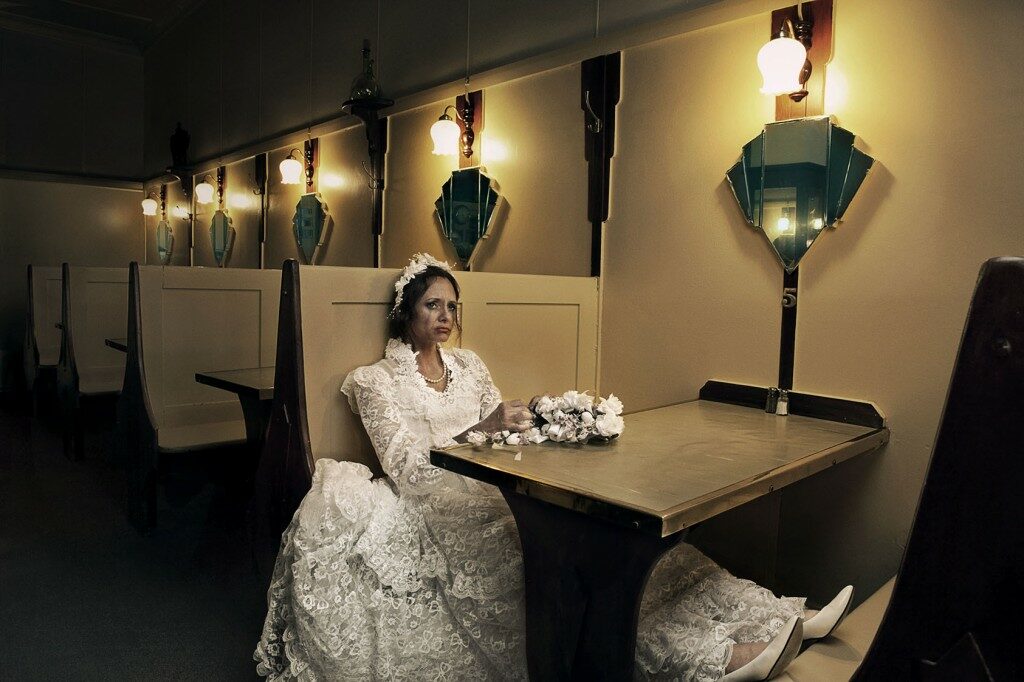

John Spiller, UK Worship
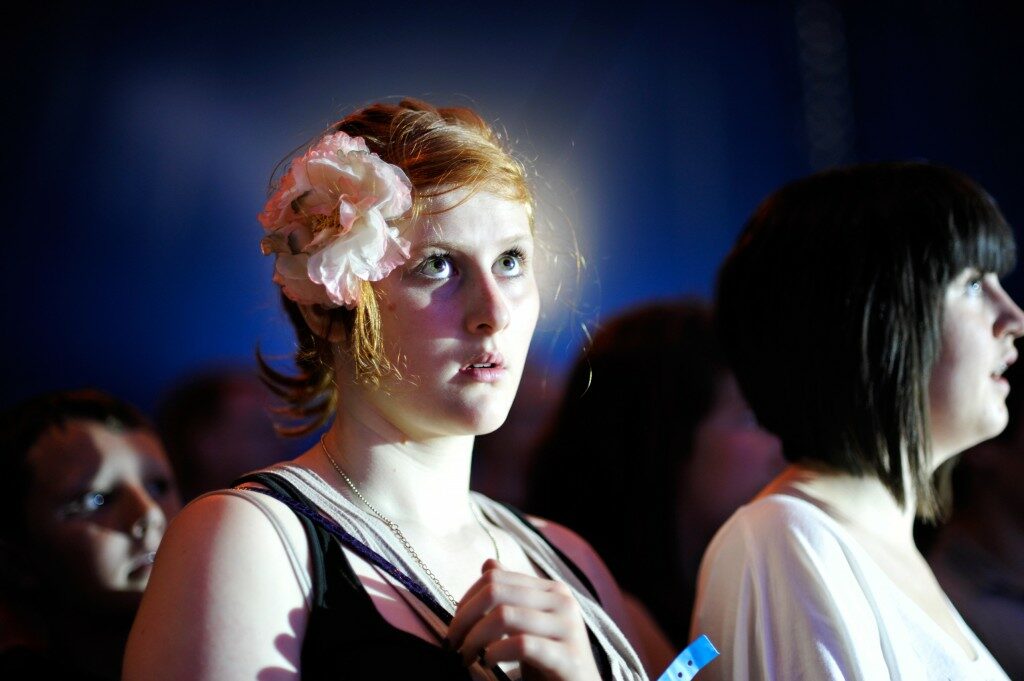
Jefferey Stockbridge, US Nowhere but Here Nowhere But Here by Jeffrey Stockbridge I began photographing women working along Kensington Avenue during the summer of 2009. Addicted to Heroine, Crack and various prescription drugs, the women I photograph have turned to prostitution as a means of supporting their drug habits. Homeless and malnourished from life on the street, they find refuge in abandoned houses while trying to avoid the cops. Enduring unthinkable pain on a daily basis, these women are both incredibly strong and weak at the same time. Caught in the grip of their addiction, they do whatever it takes to survive except for getting clean. Kensington Avenue is a hot spot for drugs and prostitution in North Philadelphia. Populated by cheap bars, thrift stores, and numerous check cashing businesses, the Avenue is the major business corridor in the neighborhood. Most drug dealers and prostitutes set up shop at their specific corners while others choose to wander back and forth seeking clients on the move. A few erotic bookstores exist on the Ave and serve as a meeting place for prostitutes and their Johns. Pay a $15 fee and you can enter a booth the size of a small bathroom for 20 mins with the guest of your choice. More common however, is the car date. In this scenario, a John will drive up and down the Ave until he picks up the woman of his choice. After securing his date, he looks for a secluded street to park and exchanges money for services. A date is usually around 20 dollars or sometimes more if the woman shows fewer signs of her addiction. Approx 5 to 10 min later the date is over, the prostitute exits the car and walks no more than 3 blocks to one of many local dealers just off the Avenue. Having purchased her drug of choice, she then goes to either an abandoned house or an empty lot to get high. After fulfilling her immediate demand to satisfy her addiction she is back on the street ready to do it all over again. Unofficially known as “The Heroine Capital of the United States,” Kensington is also known for violent crime. With a population of about 17,000 people, there were an estimated 1,000 incidents of violent crime reported in 2009. Battling violence, drug use and a severe economic decline, Kensington faces many challenges in its path towards recovery. Although it is an up hill battle that could take decades, many of Kensington’s residents don’t seem discouraged. There is an unspoken moral code that: “for better or worse, we all live together.”
Jeffrey Stockbridge Bio Jeffrey Stockbridge is a photographer who documents the complexities of urban blight. Based in Philadelphia, Pennsylvania, Stockbridge photographs the prevalence of drugs, prostitution, and abandoned homes in the city. The prevailing theme in Stockbridge’s work is his subjects will to survive a harsh urban landscape. His work has been exhibited at The National Portrait Gallery in London, The Philadelphia Museum of Art, The Institute of Contemporary Art at the University of Pennsylvania and the Delaware Art Museum. Stockbridge was recently awarded 3rd Prize in the 2010 Taylor-Wessing Portrait Prize at the National Portrait Gallery in London.
Philadelphia A house is a container for life It protects and provides for its inhabitants Both physically and spiritually A house is not just a physical structure It is much like a living person It is born, it ages and it passes away We develop feelings for a house We remember its smell and we listen to it settle We trust it when we sleep and we miss it when we move Years after a house has been abandoned Signs of life persist Discarded memories echo down dark hallways And shadowed rooms As the sun makes its daily visit It reaches the far corners of the interior Breathing life into a still landscape Revealing a bond between human beings and their shelter Jeffrey Stockbridge is a photographer who documents the complexities of urban blight. Based in Philadelphia, Pennsylvania, Stockbridge photographs the prevalence of drugs, prostitution, and abandoned homes in the city. The prevailing theme in Stockbridge’s work is his subjects will to survive a harsh urban landscape. His work has been exhibited at The National Portrait Gallery in London, The Philadelphia Museum of Art, The Institute of Contemporary Art at the University of Pennsylvania and the Delaware Art Museum. Stockbridge was recently awarded 3rd Prize in the 2010 Taylor-Wessing Portrait Prize at the National Portrait Gallery in London.



Alex Leme, US Small Town: Portraits of a Disappearing America With the gradual but steady rise of agri-business, the loss of small, family-owned and run farms, and the century-long exodus of rural populations to urban centers, farming communities have been suffering a slow and painful decline for decades. Loss of jobs, economically shattered families, failed businesses, de-population, and a general malaise of perceived worthlessness are common features of conversations that run through many small towns in America. Although these towns are often located just outside major metropolises, the realities of their social and economic landscapes are worlds apart. With a meager population of 960, Cotton Plant is nestled in the rural northeast portion of Arkansas, between Little Rock and Memphis, Tennessee. Despite its rich history and the “promising” nature of its past, Cotton Plant has suffered the same challenges and consequences as many other small rural towns. What once was a relatively thriving center and one of the fastest growing communities in Eastern Arkansas, now we find a town littered with ghost factories, abandoned schools, and the carcasses of crumbling buildings while the handful of the remaining local stores struggle to survive. Much of the historic downtown has been demolished, and only a few dignified older homes remain. The sense of purpose that once accompanied steady, meaningful work has long since vanished.



Kyle Petersen, USA Phantasm Phantasm is an exploration of psychology and transience, and the way in which these forces relate to the human experience. I am not interested in the “outward realities that have so long fascinated photographers,” but instead wish to illustrate what is constantly bubbling under the surface. Phantasm is a purging of my frustration with trying to find understanding in the monotonous drudgery and obtuse anxiety that can often accompany our chaotic and fleeting existence.
Kyle Petersen was born in Wheeling, IL, a suburb just northwest of Chicago. He received his B.A in Studio Art from Bradley University in Peoria, IL and his M.F.A from the Savannah College of Art and Design in Atlanta, GA. Kyle served as the Visiting Assistant Professor of Photography at Southern Utah University from 2006-2008. He is now based in Atlanta, teaching at the Showcase School of Photography, Gwinnett Technical College, and the Art Institute of Atlanta.

Jim Naughten, UK
Re enactors ( Capturing Past Presence )
Statement, something about the work, or anything you would like the judges to take into consideration. (Optional): Every summer, thousands of people from all over the world gather in a Kentish field and leave the present firmly behind. They step out of their routine daily lives and transform in to historical characters from the first and second world wars, often with such obsessive attention to detail that its hard to imagine them in contemporary settings. They re enact battles and drills from an imagined past wherein nostalgia and presence merge in to a ‘period rush’ of historical epiphany. In doing so they attempt to recapture or reverse the transience of time passing, if only for a few fleeting days during the summer, now and in the future.
